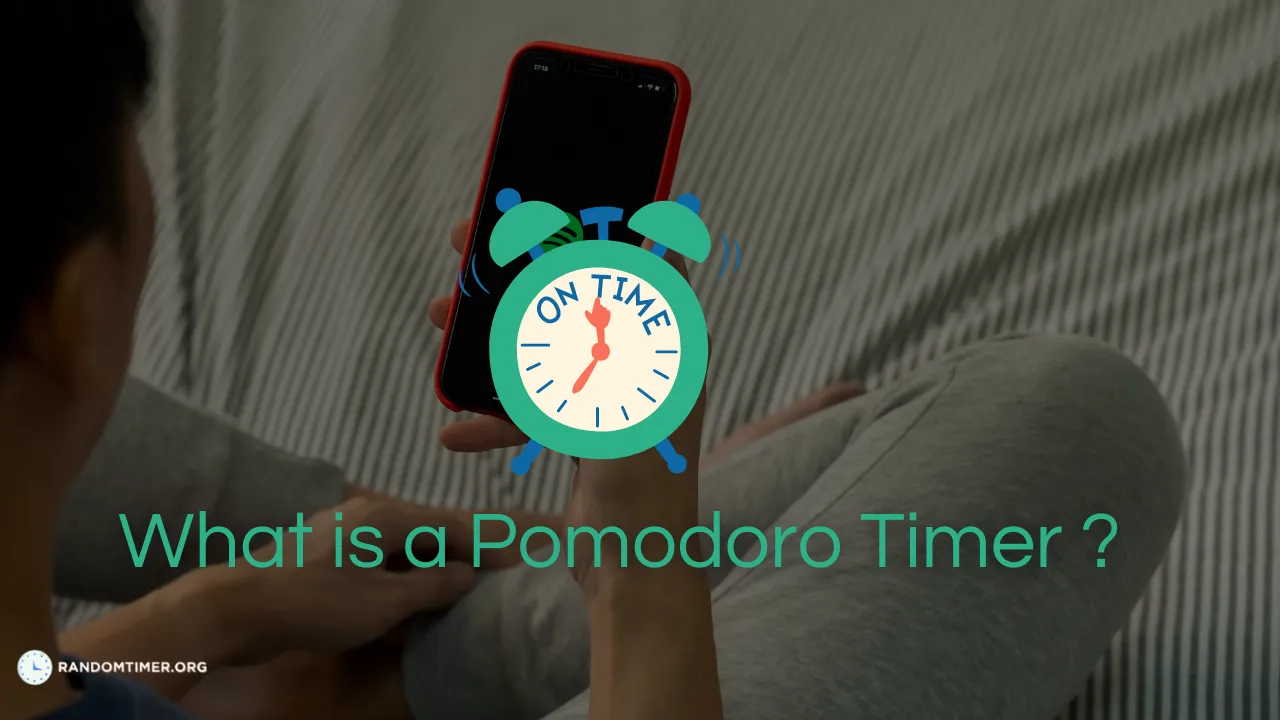A Pomodoro timer is a time management technique that breaks work into intervals, traditionally 25 minutes long, separated by short breaks.
This technique provides a structured approach to working and resting. This means you deep work effectively for a duration and rest between starting another session.
This technique allows individuals to maintain focus, manage tasks and win against distractions and procrastination.
The Origin of the Pomodoro Technique
The Pomodoro technique was developed by Francesco Cirillo in the late 1980s while he was a university student.
Just like any other grad student Cirillo was stuck between daydreaming and distractions with the pile of undone work and assignments.
During one of those days, he decided to focus on his work effectively for 10 minutes and the next we know is the Pomodoro technique.
How does the Pomodoro Technique Work?
The Pomodoro operates on a cyclic system that helps individuals manage their time and maintain mental clarity. Here is a brief overview of how the technique works.
- Set a Task: You might have a long list of pending work on your desk. Out of that list choose a task that’s urgent and hard to accomplish. Be it studying, writing, completing an assignment, or a work-related project. Choose an activity that demands your full attention.
- Set the Timer: Now that you have your task ready, it’s time to set the time for a fixed duration. Traditionally, the technique is based on 25 minutes duration. However, some tasks may require longer periods. Set the repeat timer according to the work requirement.
- Deep Work: Once you set the timer, it’s time to get deeply engaged in your work. For the next 25-30 minutes focus on your work until the timer rings. Avoid any distractions and comes in between during this time.
- Take a break: Once the time goes out, lay back and take a 5 minutes break. You may take a longer break if required. However, during the break don’t get involved in mindless scrolling or phone tapping. The break is meant to relax your mind before the next Pomodoro session.
- Repeat: This Pomodoro cycle goes on until you are done with your designated work. Once you are done with your work, you can take a longer break of 15-30 minutes.
- Track Progress: This step will allow you to track your productivity, it also helps with providing insight into the time required for various tasks.
Adapting the Technique
The Pomodoro timer technique is an effective way to reduce distractions and manage time. While the traditional technique is 25 minutes, various tasks take longer than 25 minutes.
It is important to adapt the technique to your preferences and needs. If focusing is hard for you and you are new to this technique, you might want to start with a 15-minute cycle.
A shorter period will make you realise that you can ideally sit and work. During your deep work, remove all the distractions and focus on completing the task.
Once you get a hang of this technique, you might want to move a little forward to 20 minutes. Likewise, experimentation will help you determine what works most effectively for your concentration and energy levels.
Benefits of Using the Technique
- Enhanced Focused: The Pomodoro technique promotes focus and concentration due to its nature. The set time duration and small breaks help maintain sustained concentration and prevent distractions from derailing your workflow.
- Time Management: The structured approach to work and break promotes better time management. Making it easier to estimate how much time tasks require.
- Reduced Procrastination: It’s easy to get lost in thoughts if you are aimlessly working. The technique gives you a set time duration to focus on work, which creates less room for procrastination. Knowing you only need to focus for a short period encourages you to work effectively.
- Prevent Burnout: Irregular working hours may result in fatigue and burnout. Regular short breaks during the session will help you overcome these circumstances.
- Improved Task Prioritization: Once you get a hold of this technique you will be able to manage and prioritize tasks more effectively. The specific time blocks ensure that the important tasks get the attention they deserve.
Conclusions
If you find yourself struggling to stay focused or overwhelmed by your workload, the Pomodoro can help you get rid of your burden.
The Pomodoro Technique offers a structured and effective approach to managing tasks, maintaining focus, and preventing burnout. By adopting this technique, individuals can optimize their work patterns, prioritize tasks, and accomplish more in less time.
Frequently Asked Questions
Q1. Why is Pomodoro 25 minutes?
Ans: The 25-minute default timer for Pomodoro is set based on practical observations and experimentations by Francesco Cirillo. According to him the 25-minutes focused work session followed by 5 minutes break was effective in maintaining concentration.
Q2. Is Pomodoro good for studying?
Ans: The Pomodoro technique is an ideal method for studying. The structured approach of working in focused intervals followed by short breaks aligns well with study sessions hence, prevent laziness and burnout.
Q3. Can a Pomodoro be 50-minutes?
Ans: Yes, a Pomodoro can be of 50 minutes. The ideal working session is 25 minutes however, various tasks may require longer than that. In that case, you can set the timer accordingly for a smooth and focused workflow.
Q4. How many Pomodoro do you need to study?
Ans: For an ideal study session, you must go for eight study sessions. The number of Pomodoro you need depends on various factors like subject, difficulty level, and learning style. You can adjust the session as per your need and preference.
Q5. What is the 90-20 rule Pomodoro technique?
Ans: 90-20 rule of the Pomodoro technique is where you focus on your session for 90 minutes and take a 20 minutes break after completion. This 20-minute window allows you to regain energy and prepare you for another session likewise.




